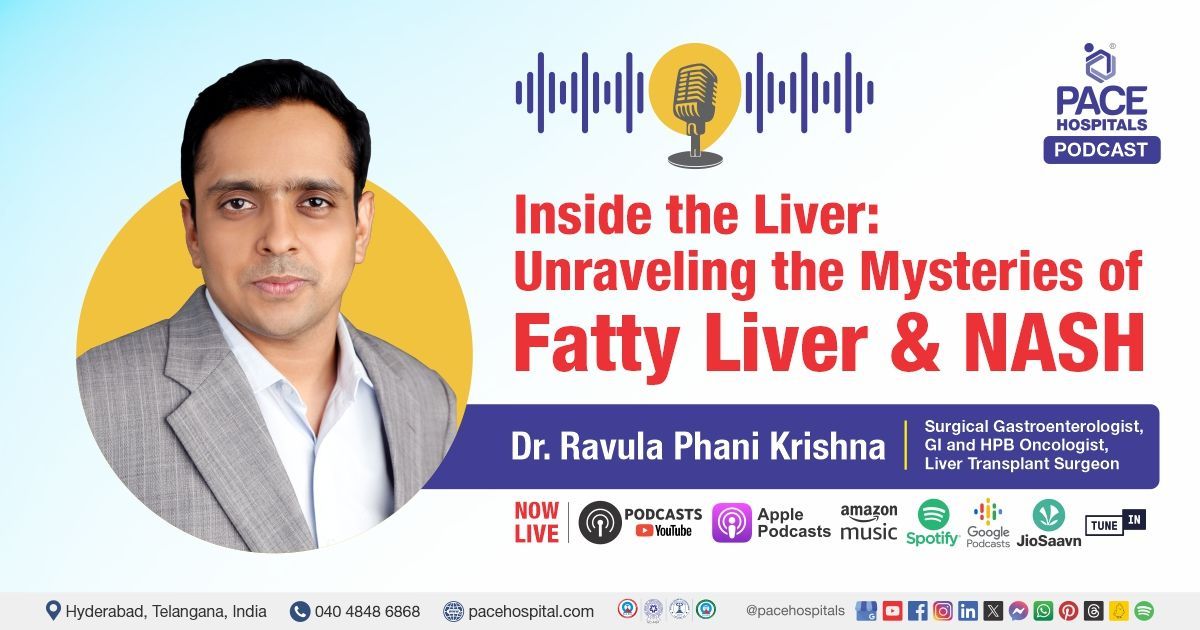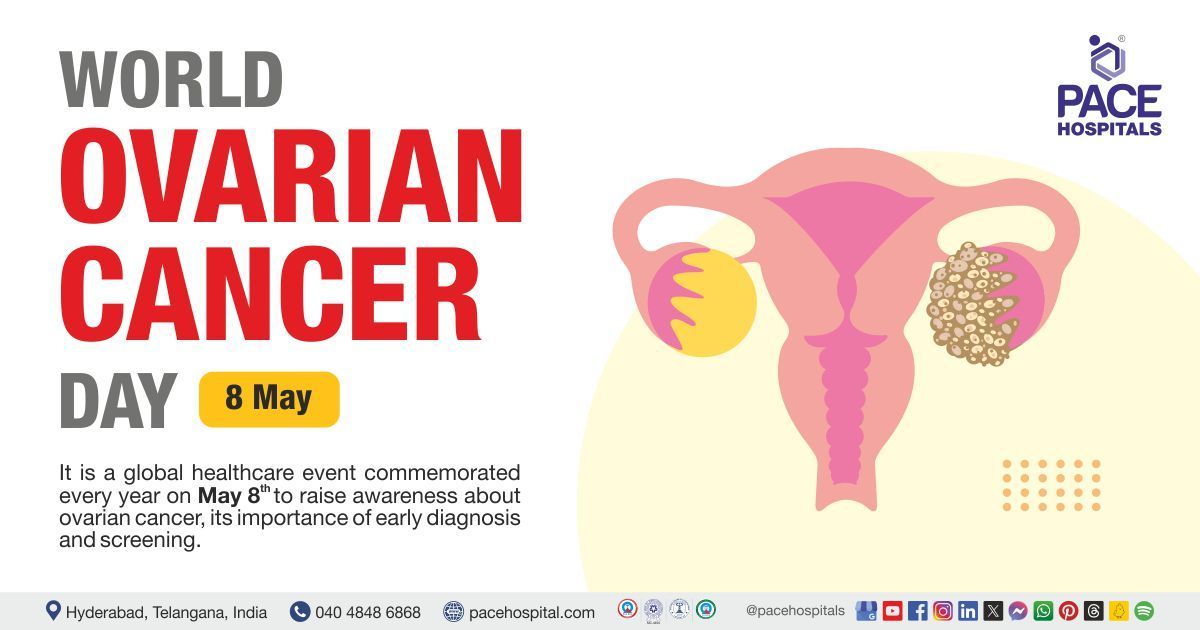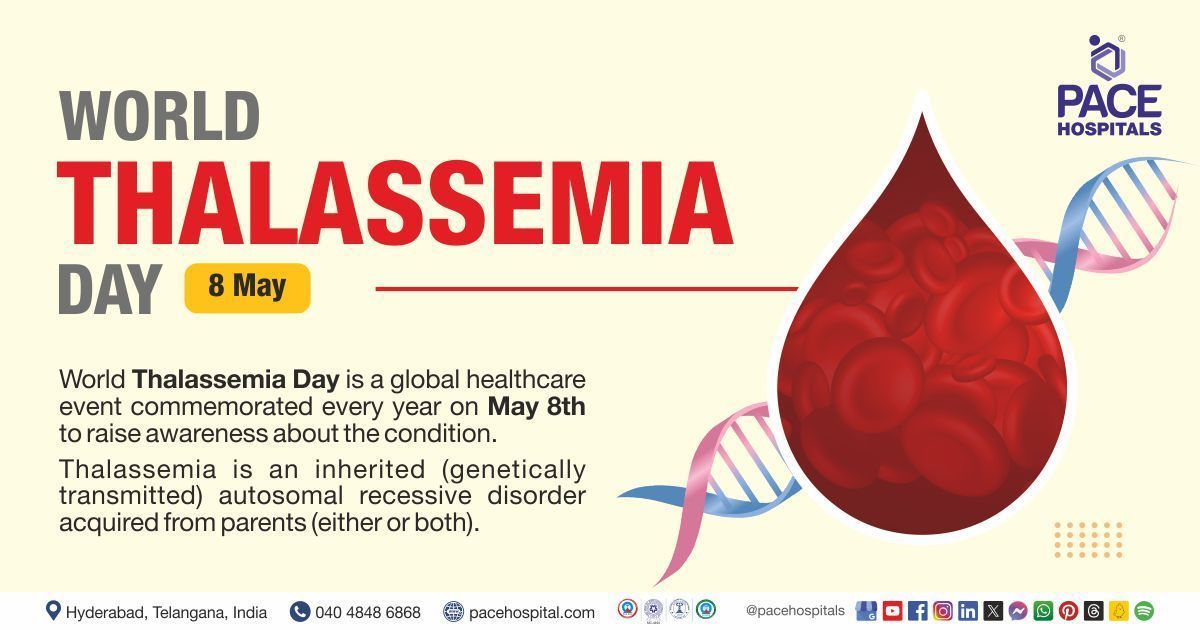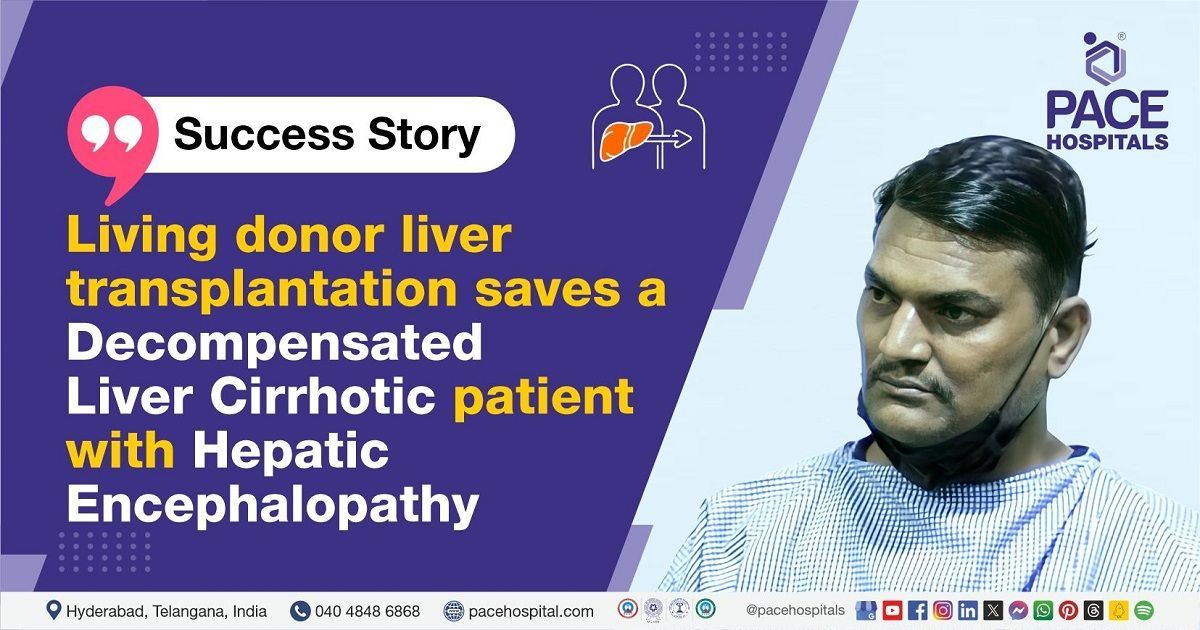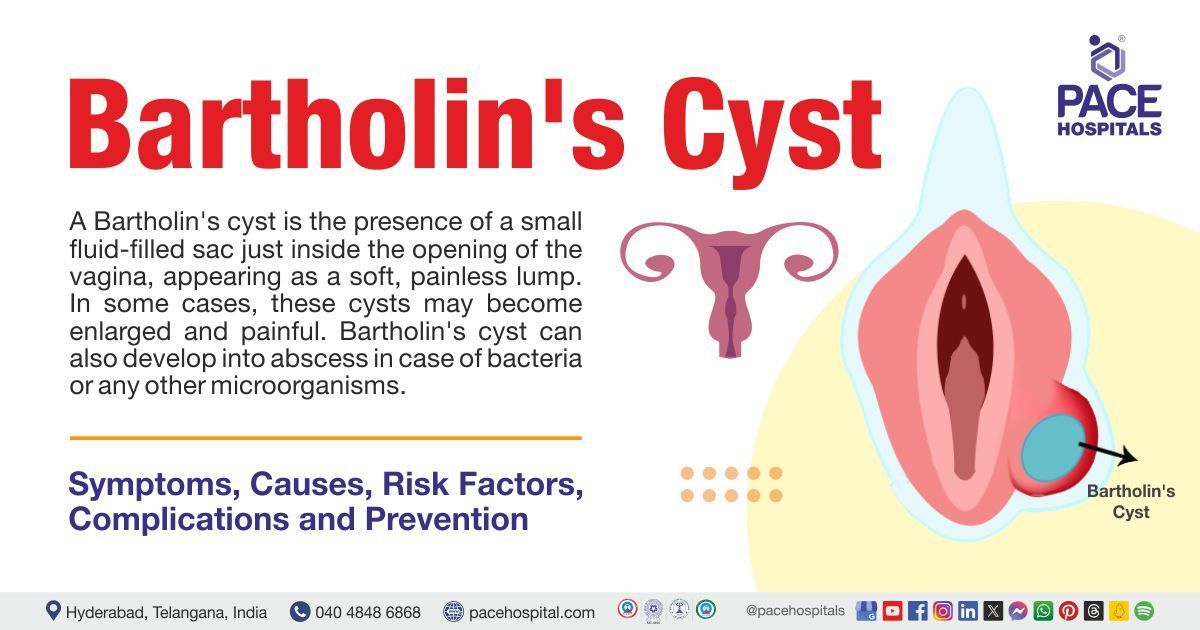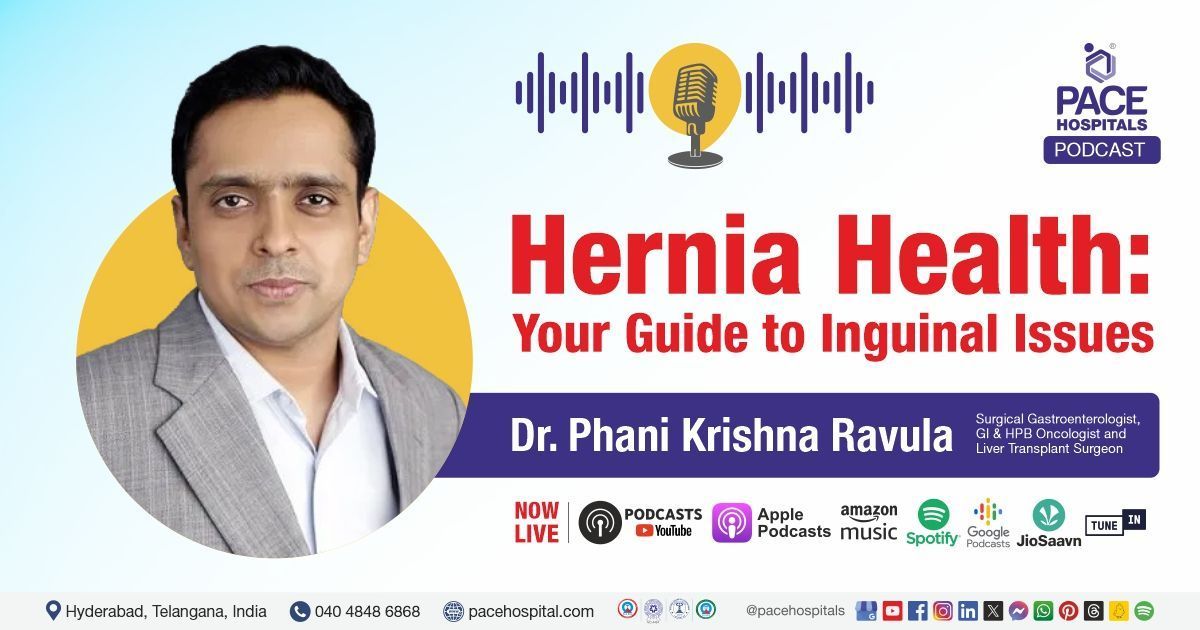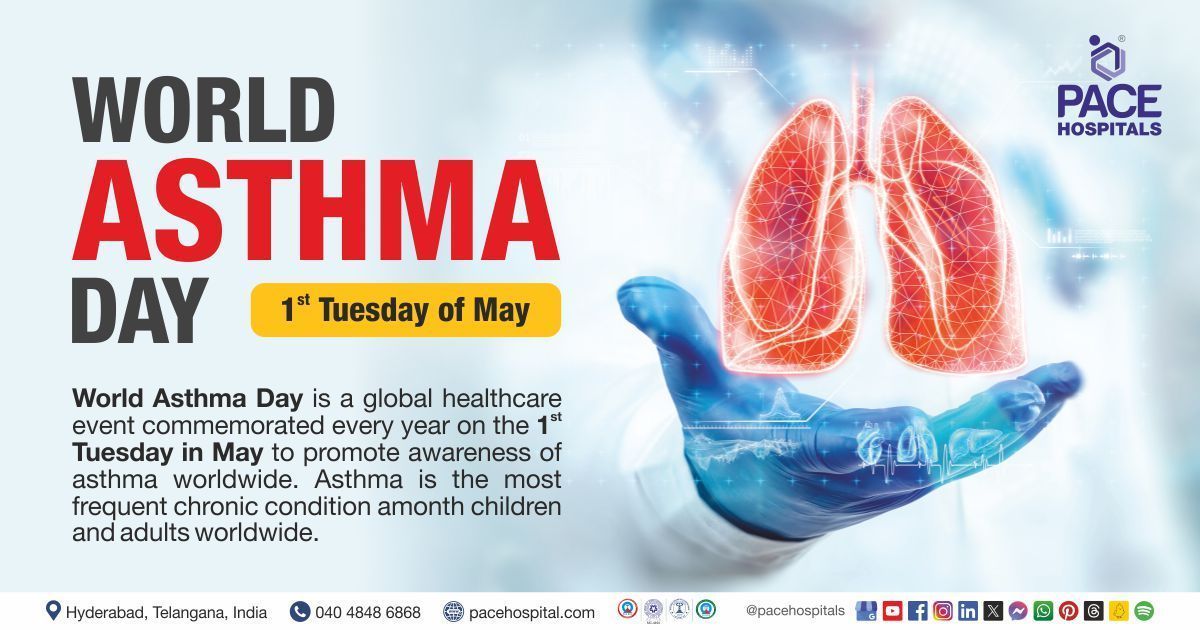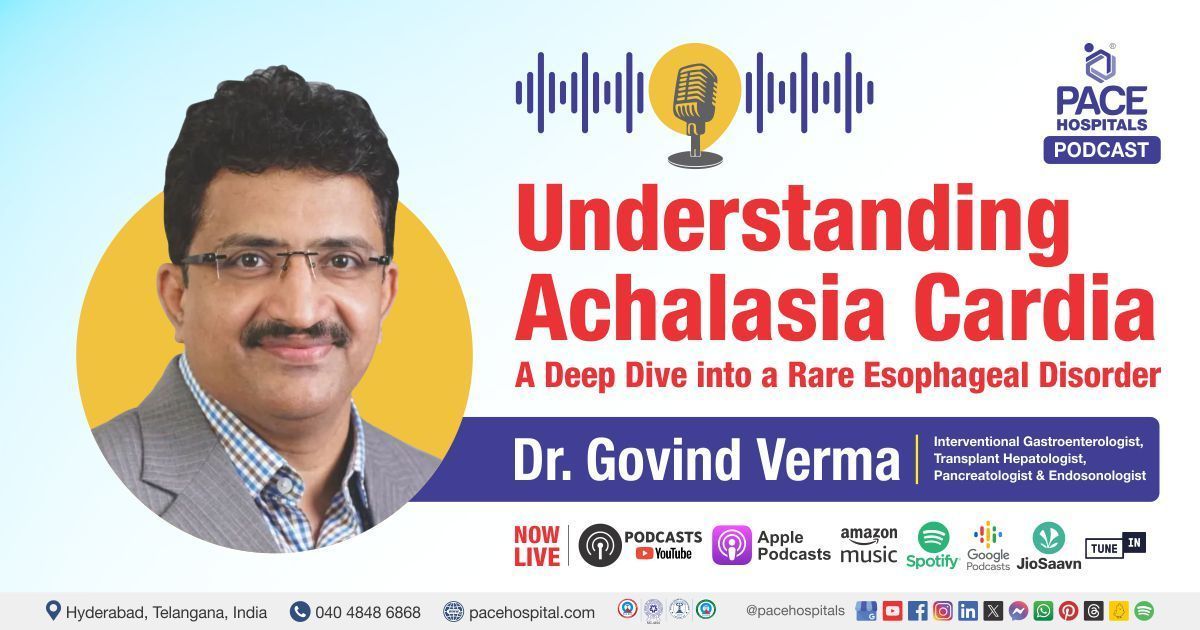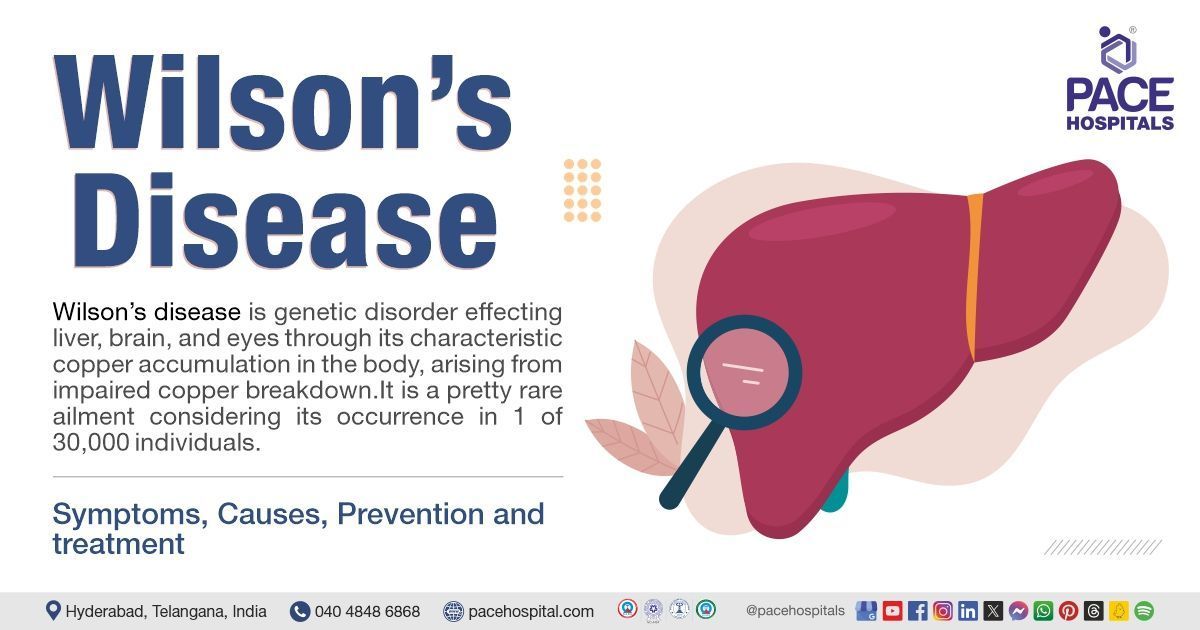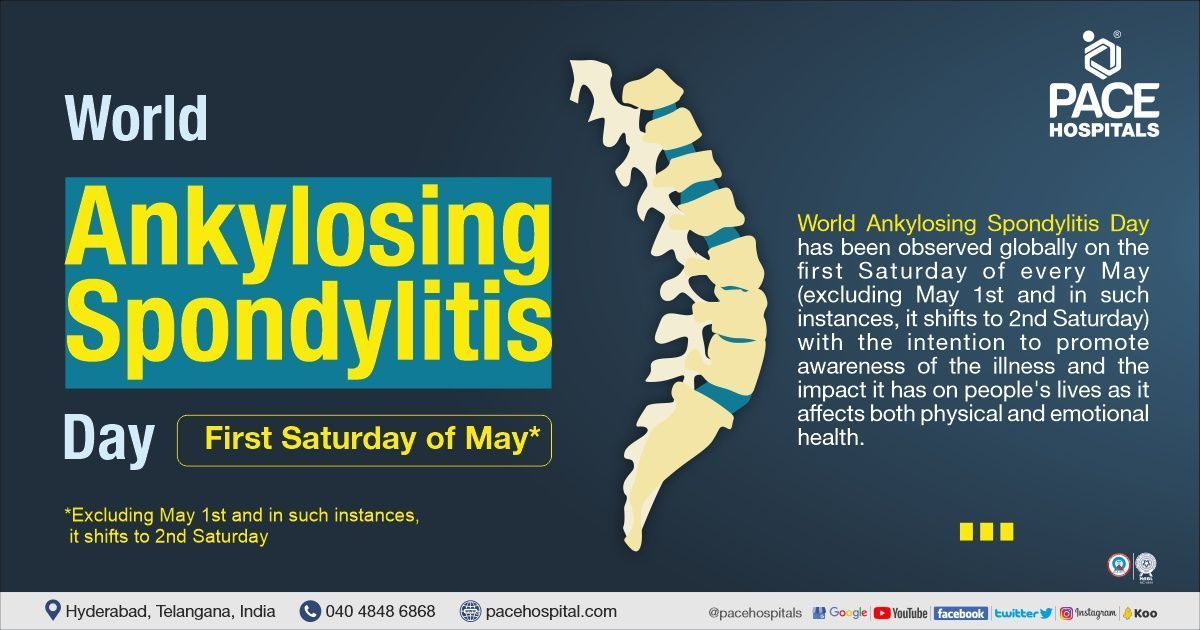Inside the Liver: Unraveling the Mysteries of Fatty Liver & NASH
Listen to
Fatty liver disease and its more severe form, non-alcoholic steatohepatitis (NASH), are becoming increasingly common health problems that often go unnoticed. These conditions can silently impact people's lives around the world. In this episode of the Fatty Liver Disease and NASH Podcast we will delve into the details, explore the effects on individuals, and discover potential techniques for preventing and managing them.
Join the
PACE Hospitals Podcast with
Dr. Ravula Phani Krishna - Surgical Gastroenterologist, GI and HPB Oncologist and Liver Transplant Surgeon at PACE Hospitals, Hitech City, Hyderabad, India, to explore the causes, consequences, and potential solutions for fatty liver disease and NASH, aiming to increase awareness and promote a deeper understanding of these conditions.
-
Transcript
Host: Hello and welcome to Pace Hospitals podcast, where we will be focusing on fatty liver disease and Nash, which is a silent epidemic affecting millions of people worldwide. Despite its widespread prevalence, it can often go unnoticed until it advances to later stages.
Joining us today, Dr. Ravula Phani Krishna, a surgical gastroenterologist, GI and HPB oncologist and liver transplant surgeon having more than 20 years of expertise in treating and managing fatty liver disease and NASH. Today we will discuss about fatty liver disease and NASH, a condition that affects more people than we realize.
Dr. Ravula Phani Krishna, thank you for joining us at Pace Hospital's Hitec city.
Doctor: Thank you for inviting me today I am would like to address you on a topic of utmost importance - Fatty Liver Disease and its more severe form, Non-Alcoholic Steatohepatitis, or NASH. These conditions have become a growing concern in our society, and understanding their implications is crucial for our collective well-being. Let us delve into the intricacies of these liver disorders, their causes, and the potential impact on public health.
Host: Dr. Ravula Phani Krishna thank you for joining us. Let's start by understanding what fatty liver really means?
Doctor: Fatty liver is a condition in which at least 5% of the liver cells have been replaced by fat, so that we call that fatty liver. However, of course, in the clinical implications to detect by ultrasound, at least only once 30% of your liver is replaced by fat, we can pick it up on ultrasound.
So the fatty liver can be is usually due to the commonest is due to obesity and sedentary lifestyle which we call as non-alcoholic fatty liver disease (NAFLD) and there's also an alcoholic fatty liver disease which is brought about by the consumption of alcohol and there are other types of fatty liver disease which can be brought about by some medical conditions, some drugs and so on and so forth.
But today our discussion will be limited to the fatty liver, the commonest form of fatty liver, which is caused by the lifestyle obesity and diabetes in the absence of alcohol.
Fatty liver is now a huge epidemic throughout the world and the incidence of fatty liver in the western countries and even in Asia, in countries like India, especially in the urban population is about 30% to 40%, that is one out of three people have fatty liver.
Host: What is the difference between fatty liver and Nash?
Doctor: So, like I said, fatty liver is extremely common, the non-alcoholic fatty liver related to obesity and diabetes and sedentary lifestyle, it is extremely common. But fatty liver is there in lot of patients, but not all of them have something called NASH. So one is you have the basic fatty liver, which is replacement of more than 5% of the liver by fat.
Then you have non-alcoholic Steatohepatitis, which is in addition to presence of fat, there is ongoing inflammation. So there's ongoing liver inflammation and liver injury, so when this kind of injury and inflammation is there, it is called as non-alcoholic steatohepatitis.
So the problem is, fatty liver per se may not be very serious, but patients with fatty liver who have non-alcoholic Steatohepatitis over a period of ten to 15 to 20 years can go on to have liver cirrhosis and liver cancer.
Host: What are the causes of fatty liver disease and the risk factors of developing fatty liver?
Doctor: Fatty liver is basically occurs in the urban population, secondary to mainly a sedentary lifestyle, too much calorie intake, lack of exercise and obesity and diabetes, especially the Asian population men, we are prone to a lot of central obesity.
Overall weight may not be high, but we have a lot of central obesity, which predisposes to fatty liver, other causes, there can be other causes for fatty liver, like alcohol can cause fatty liver, some drugs can cause fatty liver, but the fatty liver, which we are talking about is NAFLD, non-alcoholic fatty liver disease, in which the amount of alcohol is usually not so significant and the fatty liver is basically secondary to your other medical issues, like obesity, sedentary lifestyle and diabetes.
The fatty liver can be caused by alcohol also. It is, in fact, a very common cause of fatty liver but if they stop the alcohol, the fatty liver reverses. Likewise, in patients with fatty liver, even if they're consuming a small quantity of alcohol, it can lead to further liver damage and more serious liver problems.
Host: Is fatty liver a lifestyle disease?
Doctor: Definitely, Fatty liver is a lifestyle disease, especially in the Asian population. We have a bouquet of diseases. We have type-2 diabetes, we have hypertension, we have hyperlipidaemia, high cholesterol levels, we have central obesity, and we have fatty liver and all these issues, we think that there are a series of separate diseases. Actually, for the hypertension, we do go to a cardiologist, for the diabetes, to an endocrinologist for the fatty liver, we go to a gastroenterologist, but actually, when you look at it, this is all one group of diseases which is basically secondary to your lifestyle.
An unhealthy lifestyle, too much calorie intake, too much processed food intake, lack of, especially cardio exercise, leading to too much intake of calories and not spending enough calories leads to fatty liver.
Host: How is fatty liver disease diagnosed?
Doctor: So, in most of the patients, the fatty liver is detected by a routine ultrasound in the outpatient basis. Like I said, ultrasound detects only once fat, there's more than 30% of the liver is replaced by fat, but once a person has fatty liver.
Host: How do we differentiate whether he has Nash non-alcoholic steatohepatitis or not?
Doctor: Because NASH is a much more serious form of fatty liver with very serious implications. So, basically, once you go to a doctor with an ultrasound report of fatty liver, he does a liver function test.
The liver function test, especially the liver enzyme levels, the SGOT, SGPT, also called AST and ALT, they are the liver enzymes, normally, they are less than 40. If the liver enzyme levels are elevated, that means these enzymes, which should be inside the liver cells because of increased injury, they are breaking down, and the blood levels of these enzymes are increasing. That means there is a possibility of ongoing non-alcoholic steatohepatitis.
So in patients whom we have this suspicion, we have two tests. One is a liver biopsy, that means actually, we have to stick a needle inside your liver and take a small piece of liver and study it under a microscope to see how severe the liver injury and the liver inflammation is and is there any scarring in the liver.
But, of course, this is an invasive test because you have to poke the liver. There is always a risk of bleeding and all that, so we have a simple test called liver elastography, or fibroscan, which can actually, non-invasively, we just put a probe on top of your liver it sends some waves into the liver and finds out the stiffness of your liver, so by this stiffness, you can categorize how severe your Nash is and is your liver getting progressively more fibrosed and progressing to liver cirrhosis.
Host: What are the long term risks and complications of fatty liver?
Doctor: Fatty liver is a pandemic now worldwide; around 30% to 40% of the patients have fatty liver. If 30% to 40% of the patients have fatty liver, about 5% of these patients have something called non-alcoholic steatohepatitis.
Host: Who are these patients with non-alcoholic steatohepatitis?
Doctor: Patients with, especially diabetes and fatty liver. Patients with extreme obesity and fat liver, patients who have, in addition to fatty liver, they also consume a bit of alcohol, patients with very high triglycerides and cholesterol, patients who have been detected to have NASH. This 5% of the patients, over a period of 15 to 20 years, they can lead to liver cirrhosis and liver failure requiring a liver transplantation.
Likewise, the presence of fatty liver and Nash over a period of ten to 15 years can lead to liver cancer also. So once upon a time, the leading cause of liver cancer and need for liver transplantation worldwide was hepatitis B, hepatitis C, infections and alcohol consumption. But now the fatty liver has overtaken all of them as the leading cause of liver related problems worldwide, both liver failure and liver cancer.
The implications are that if a patient has fatty liver and NASH, especially patients who have fatty liver and diabetes with NASH, over a period of 20 years, 20% to 30% of these patients will develop liver failure. On an average, out of every one person per year will go on to develop liver cirrhosis and liver failure.
Host: What are the treatment options for fatty liver disease?
Doctor: Most of the time, patients with fatty liver have no symptoms because, per say, fatty liver is a very slow condition only which has liver enlargement, but the patient will usually not have any symptoms because usually most of the patients come with some symptoms like bloating, indigestion or mild discomfort in the upper abdomen, which are probably not related to fat liver.
Patients who have advanced because lot of years, many years of NASH leading on to liver cirrhosis and advanced liver disease, they can have basically features of liver cirrhosis and liver failure.
Like they can have jaundice, they can have muscle wasting in which your arms and shoulders become very thin, lower limbs, they can have swelling in the feet, swelling in the tummy, blood vomiting’s but all these are basically features of advanced liver disease, which, at which stage, even if it direct, we can't reverse it.
So patients with early fatty liver and NASH have no symptoms whatsoever and in these patients, basically, we have to detect them. Patients with diabetes, patients with obesity, especially central obesity, patients who consume alcohol should go to a doctor and get their ultrasound done and get their liver function done to rule out fatty liver.
So there are some medications which are recommended for treatment of fatty liver. Antioxidants like vitamin E and some artificial bile acids like orsodioxycholic acid have been recommended for fatty liver. But honestly speaking, there is no medication which will reverse fatty liver or which will reverse Nash, but fatty liver or Nash is a reversible condition.
When a patient has a fatty liver or NASH, it can be completely reversed, but once the fatty liver or NASH, over a period of 15 to 20 years, time becomes cirrhosis.
Once you have cirrhosis, even if you treat the underlying cause, the cirrhosis does not get reversed the same way as a patient with hepatitis B, hepatitis C or alcohol. In the early stages, if you treat the hepatitis B, C infection or treat the stop drinking alcohol, the liver becomes normal.
But once the liver becomes cirrhotic, even if you treat the hepatitis B, hepatitis C or stop alcohol consumption, it's a progressive, irreversible process. The main treatment of fatty liver is first is to get yourself checked by a doctor for fatty liver, patients with NASH patients with diabetes with fatty liver are at a very high risk of going for NASH and subsequent cirrhosis.
So these patients should achieve the only way to reverse the fatty liver reverse the NASH is by achieving weight loss only when you at least like you have to see. Usually a simple formula is you look at your height in centimetres, if you are 170, example -100 is your ideal body weight, roughly, so the more closely you are to your ideal body weight.
If you lose around 10-12kilos in patients who are around about 20 kilo overweight, if they lose ten to 15 kilos of weight, the fatty liver and Nash reverses and that's the only way and patients with alcohol, if you're obese and already have fat liver, they should absolutely abstain from alcohol totally. Because alcohol not just contributes to the fatty liver and obesity, it will also increase the rate of liver damage and increase the risk of cirrhosis, so the main treatment of fatty liver is prevention.
Prevention by a healthy lifestyle, cutting down on your carbohydrate intake, cutting down on the junk food, processed food intake, avoiding alcohol, healthy lifestyle, an active lifestyle, increasing the protein in your diet, increasing the fiber in your diet. These kinds of things are the main thing for prevention of fatty liver rather than treating fatty liver.
Host: What are the best foods to eat for fatty liver?
Doctor: So a lot of patients keep asking us, once you have fat liver, what kind of food I should take? Again, like I said, processed carbohydrates. Your rice, chapati, idli, dosa, bread, biscuit, haldirams, the bhajis, bujias, all those kind of processed, which is made from a wheat flour, rice floor, those kind of processed foods, cookies, cakes, all floor items should be cut down and diet, which is rich in fruits. Fruits also high glycemic index, fruits like oranges, mangoes are not good, watermelon, muskmelon, papaya, guava, these kind of foods are good and lot of vegetables.
Vegetables like aloo and all that, they are carbohydrates but all of the green leafy vegetables, they're all very good for the health more of salads and protein intake is good protein intake, chicken, egg, especially the white meats chicken, egg, fish.
Avoiding the red meats, mutton, beef, so this kind of dietary and lifestyle changes and maintaining your body weight as close to the ideal as possible, avoiding central obesity as much as possible is important to prevent fatty liver and reverse fatty liver as well.
Host: Is bariatric surgery a viable treatment option for NAFLD or NASH?
Doctor: So we do see a lot of patients who are morbidly obese, I mean, morbidly obese definition is a normal BMI should be less than 25, a patient with a BMI of 37.5, or a patient with a BMI of more than 32.5 with obesity related comorbidities such as diabetes, hypertension, fatty liver and NASH.
These groups of patients in who to achieve weight loss is extremely difficult by diet and exercise alone because of various issues. So in these patients, especially when you have fatty liver, and Nash, definitely they would be benefited by bariatric surgery, because, like I said, the fatty liver, Nash remains asymptomatic over a period of 15 to 20 years and leads on to cirrhosis And once you have cirrhosis, it's too late, you will inevitably become very sick and be at a risk of developing liver cancer and need a liver transplantation.
So to prevent that, in patients with morbidly obese patients, bariatric surgery is a very useful adjunct because it not just treats the fatty liver and Nash, but also other obesity related problems, such as type two diabetes, hypertension, obstacle sleep apnoea, the risk of cancer they're all reduced.
Host: Is fatty liver dangerous?
Doctor: Fatty liver can cause death, basically, especially in fatty liver patients with significant obesity, fatty liver patients who consume alcohol, fatty liver patients who are diabetic. In these kind of patients, once it goes to NASH, NASH can, over a period of, like I said, 15 to 20 years, it can lead to liver cirrhosis and liver failure, which is an incurable condition, except with transplant, and also it can lead to liver cancer.
So these can lead to death of the patient. Not just that, it has been found that the life expectancy of patients with fatty liver is less than even without NASH. The life expectancy of patients with fatty liver without NASH is also lesser than the patients without fatty liver.
The reason is, like I said, all these things come in a bouquet, your risk of heart disease, risk of stroke, hypertension, diabetes, cancers, all these things come as one bouquet. And so, in these patients, patients with fatty liver are at a higher risk of developing death due to cardiac disease and death due to cancer compared to the regular population.
Host: How does fatty liver disease impact the need for liver transplantation?
Doctor: So liver transplantation for fatty liver is ofcourse, treatment for end stage fatty liver disease patients. Once your fatty liver has been there for so many years with chronic inflammation going on in the liver, and that has led to either liver cancer or a liver failure in which the liver is stopped its synthetic function, and you develop symptoms such as asities, pedal edema, blood vomiting effect on the brain, which we call encephalopathy.
In these kinds of patients, basically end stage liver disease, it is irreversible and liver transplantation is needed in these patients with fatty liver. Even liver transplantation has its higher risk than the regular population because majority of them are very obese and the risk of the technically and the postoperative recovery wise, the surgery is higher risk in an obese patient compared to a non-obese patient.
And because in these patients, usually fat liver is associated with obesity, they have other comorbidities such as long standing diabetes, hypertension, cardiac disease, which further complicate the transplant surgery.
Host: Thank you Dr. Ravula Phani Krishna for being with us for sharing crucial information on topic fatty liver disease and NASH to our listeners.
Doctor: I hope this information will empower listeners with the knowledge to advocate for regular screenings and support ground breaking research. Together, we can make significant strides in preventing, managing and ultimately conquering liver disorders.
Host: If any of you have any further questions regarding fatty liver disease in NASH, please don't hesitate to consult a gastroenterologist. And remember, it's the small everyday choices that add up to big health wins. Your liver is your body's unsung hero and giving it a little attention goes a long way. Thank you.
We will see you soon with another episode showed on PACE Hospitals podcast. Until next time, take care of your liver, take care of yourself and stay safe. Thank you.
Request an appointment
Fill in the appointment form or call us instantly to book a confirmed appointment with our super specialist at 04048486868
Appointment request - health articles
Thank you for contacting us. We will get back to you as soon as possible. Kindly save these contact details in your contacts to receive calls and messages:-
Appointment Desk: 04048486868
Whatsapp: 8977889778
Regards,
Pace Hospitals
Hitech City and Madinaguda
Hyderabad, Telangana, India.
Oops, there was an error sending your message. Please try again later. We will get back to you as soon as possible. Kindly save these contact details in your contacts to receive calls and messages:-
Appointment Desk: 04048486868
Whatsapp: 8977889778
Regards,
Pace Hospitals
Hitech City and Madinaguda
Hyderabad, Telangana, India.
Our Locations
Subscribe to our newsletter and stay updated with the latest health information.
By clicking on subscribe now, you accept to receive communications from PACE Hospitals on email, SMS and Whatsapp.
Subscribe to PACE Hospitals News
Thank you for subscribing. Stay updated with the latest health information.
Oops, there was an error. Please try again submitting your details.
-

Payment in advance for treatment (Pay in Indian Rupees)
For Bank Transfer:-
Bank Name: HDFC
Company Name: Pace Hospitals
A/c No.50200028705218
IFSC Code: HDFC0000545
Bank Name: STATE BANK OF INDIA
Company Name: Pace Hospitals
A/c No.62206858997
IFSC Code: SBIN0020299
Scan QR Code by Any Payment App (GPay, Paytm, Phonepe, BHIM, Bank Apps, Amazon, Airtel, Truecaller, Idea, Whatsapp etc)
Call us at 04048486868
ADDRESS
PACE Hospitals
Hitech City : Beside Avasa Hotel, Pillar No. 18, Hyderabad - 500081
Madinaguda: Mythri Nagar, Beside South India Shopping, Madinaguda, Hyderabad - 500050
QUICK LINKS
Disclaimer
General information on healthcare issues is made available by PACE Hospitals through this website (www.pacehospital.com), as well as its other websites and branded social media pages. The text, videos, illustrations, photographs, quoted information, and other materials found on these websites (here by collectively referred to as "Content") are offered for informational purposes only and is neither exhaustive nor complete. Prior to forming a decision in regard to your health, consult your doctor or any another healthcare professional. PACE Hospitals does not have an obligation to update or modify the "Content" or to explain or resolve any inconsistencies therein.
The "Content" from the website of PACE Hospitals or from its branded social media pages might include any adult explicit "Content" which is deemed exclusively medical or health-related and not otherwise. Publishing material or making references to specific sources, such as to any particular therapies, goods, drugs, practises, doctors, nurses, other healthcare professionals, diagnoses or procedures is done purely for informational purposes and does not reflect any endorsement by PACE Hospitals as such.

